Oil Palm cultivation has become a lucrative and expanding business. Its scientific name is Elaeis guineensis. Oil Palm orchards adapt to subtropical and tropical latitudes, providing the best climate for the crop to thrive. Oil Palm farming helps farmers to double their income. Oil Palm cultivation is encouraged by the high demand for its products. Although planting a crop is very useful, it requires some knowledge and effort to grow it before its producers can benefit from the planting produce.
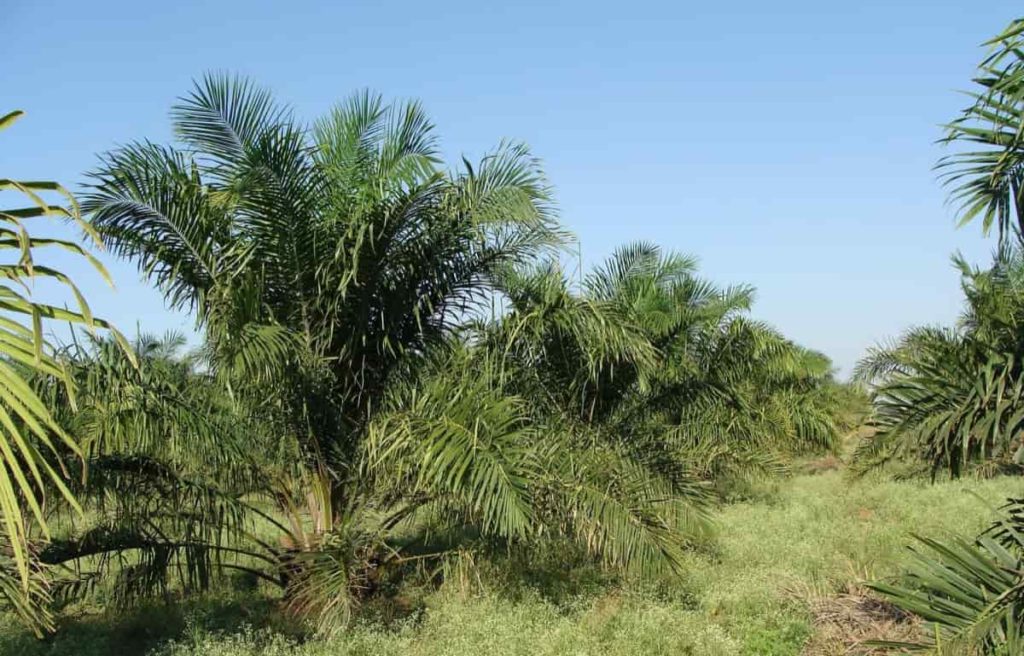
Firstly, the plant needs specific soil and climatic conditions. Secondly, the development of Oil Palm begins after preparing soil and seeds. Thirdly, oil Palm cultivation practices include pest and herb control, irrigation and fertilization, early flowering, and pruning. Let’s check out the top 16 steps to boost Oil Palm yield below.
Oil Palm cultivation is essential for increasing the local availability of edible oil as it is the largest oil-producing perennial crop. This growing global production volume is mainly due to technology and an increase in the area under Palm Oil rather than an increase in yield per hectare. Follow these simple steps to get more yield in Oil Palm.
Top 16 steps to boost Oil Palm yield
Step 1: Select varieties of Oil Palm
Tenera is a commercial hybrid variety of Palm Oil grown for the highest oil production in the world. It is a hybrid between the thick rounded Dura and the Shelless Pisifera species. The shell of the Tenera hybrid plant is thin and moderately heavy mesocarp and has a high oil content.
Step 2: Climate requirements for increasing production
Oil Palm is a moist crop. Equal distribution of 150mm / month or 2500-4000mm / year rainfall is required. Rainfall distribution in India is not even fair. Therefore, follow the recommended methods and grow oil Palm under certain irrigation conditions. The crop grows well between 29-33°C maximum and 22-24°C minimum.
More than 80% moisture is needed to get well. For better production of Palm Oil, the crop needs 1800-2000 hours of sunlight per year, more than 300 calories / cm2 / day, and at least 5 hours of continuous sunlight. Humid, deep, and well-drained medium-structured soils with humus content are considered ideal.
Step 3: Soil management for increasing yield of oil Palm
The most suitable soil is moist, well-drained, deep, loamy alluvial soil, rich in organic matter with good water permeability. The soil needs to be at least one meter deep. Avoid highly alkaline, highly salty, aquatic, and coastal sandy soils. The constant availability of moisture in the soil increases the full growth and yield of oil Palm. Adequate water supply, good soil depth, and water holding capacity are essential to water availability.
In case you missed it: Top 17 Steps to Boost Date Palm Yield: How to Increase Production, Quality, and Size
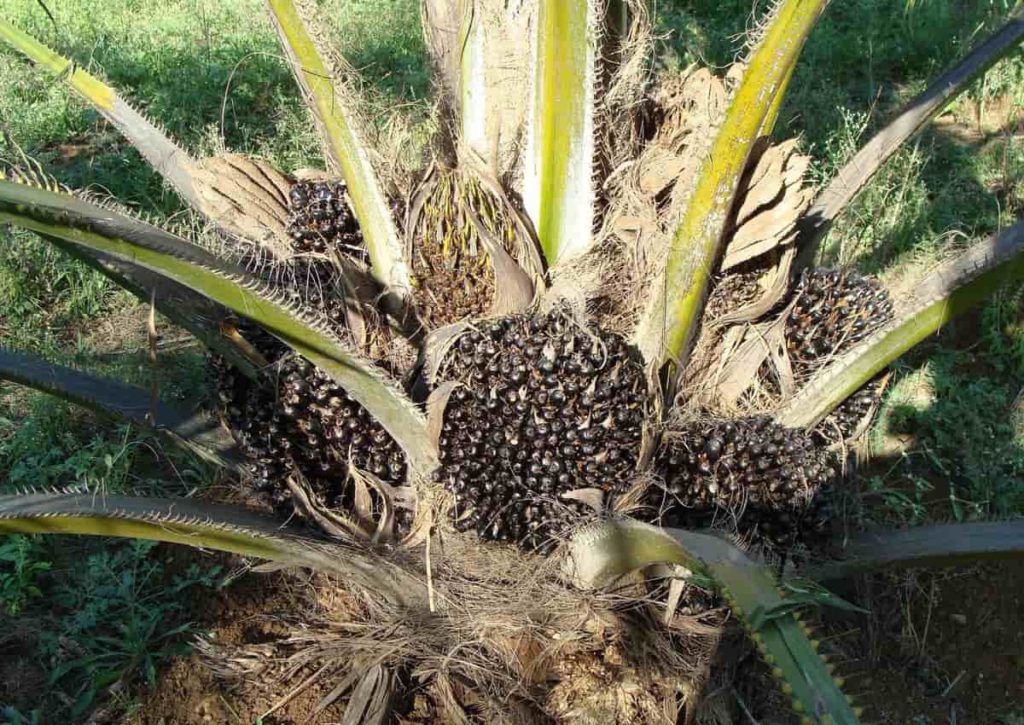
Oil Palm is the best oil-rich crop in productivity, although planting oil Palms will not bring immediate profits. Crop productivity depends on tree type, soil type, climatic conditions, oil Palm orchard management, and cultivation methods. Orchards produce about four tons of Crude Palm Oil per hectare, eight times more productive than Palm Oil production. Oil Palm trees grow with very large and long leaves, which produce many oils-producing fruits.
Due to high oil production, essential and required nutrients should be provided on time. The best soil types for cultivating oil Palm are well-drained or well-drained soils are:
- At least one meter deep for root growth;
- Rich in organic matter;
- With pH 4 to 5;
- Adequate soil moisture.
Step 4: Seed preparation in oil Palm cultivation
Oil Palms are usually spread with seeds for planting. Seed treatment is responsible for oil Palm cultivation and management as improperly prepared seeds germinate after a few years due to prolonged inactivity. In stable warm rooms (40°C), soak for about 2.5 months in dry and daily changing the water for 4-5 days; seeds begin to germinate in about 12 days (3-3.5 months after germination).
Immediately after germination, sprouts are placed in plastic (polyethylene) bags or containers with an equal proportion of topsoil and properly decomposed cattle manure. Sprouts stay in bags for about 4-5 months for planting (until bifid leaves form). After that, bifid-leaf sprouts continue in the nursery, growing for about a year. Finally, plants with about 12-15 leaves at least one meter tall are mature and ready to grow in Palm Oil gardens.
In case you missed it: Earning 7 Lakh Per Year from Date Palms: A Date Palm Farmer Success Story
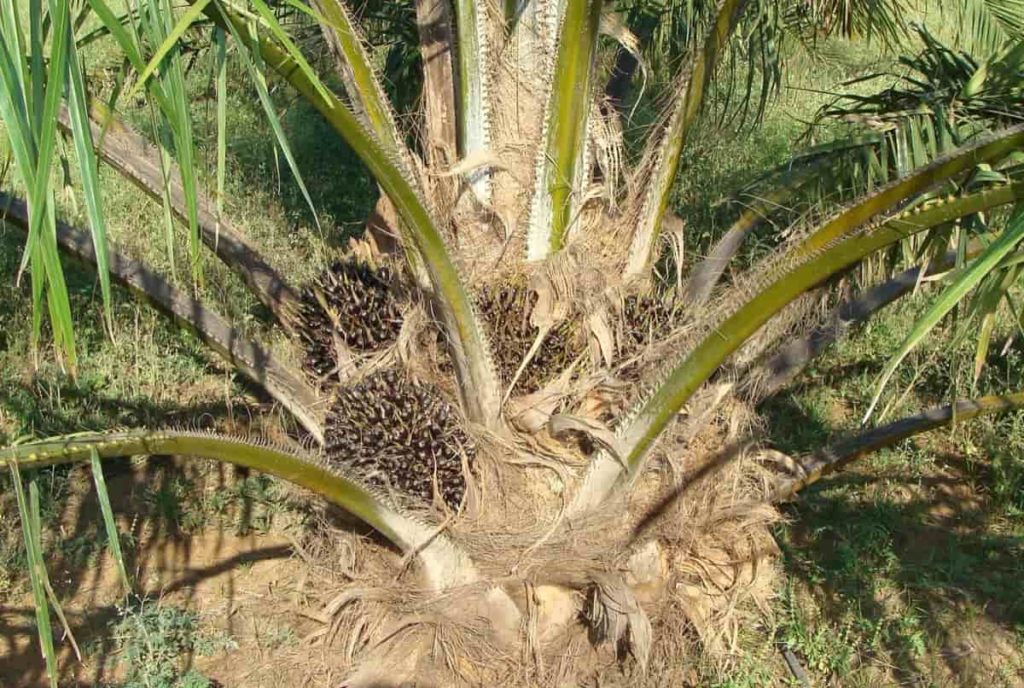
Step 5: Tips to grow Palm trees fast
There is a way for them to grow faster, thus producing more quality fruits for growing your Palm trees.
- Create a micro-environment for Palm trees to grow faster. The amount of light available controls the fruits and flowers of the tree. If your trees are outside, make sure they get enough light. Indoor Palms need artificial light.
- Keep the trees warm. Palm trees grow fast in hot weather. In addition, some artificial lighting systems generate heat.
- Increase the growth rate of your Palm tree by providing extra nutrients and carbon dioxide.
- Apply a special Palm fertilizer to the soil around the Palm trees, available at most garden supply stores. Potassium sulfate accelerates the growth process and increases fruit production.
Step 6: Best planting practices for increasing fruit production
In addition to growing productivity and high demand for commodities worldwide, the best planting methods for growing Oil Palm offer several additional agricultural benefits;
- Resistance to relatively high pests and weeds;
- Possibility of intercropping in cultivation;
- Year-round harvesting in plantations;
- Monthly income (during the fruiting phase);
- Absence of irrigation in case of heavy rainfall.
Step 7: Mulching improves plant growth
Base mulching helps maintain soil moisture and creates a favorable microclimate for plant growth. In addition, the oil suppresses weeds in Palm groves. Male flowers, coconut husks, empty bunches, straws, and leaves can act as natural mulch material in cultivation.
Step 8: Irrigation management for high productivity
Oil Palm requires a lot of irrigation, as it is a fast-growing crop with high productivity and biomass production. Therefore, irrigation management is one of the most critical aspects of Oil Palm cultivation. Irrigation is used to meet the soil water reserves in the root zone, and thus, the demand for crop vapor transmission is met. The deficit or surplus of water wood creates stress on oil Palm and adversely affects its yield.
Irrigation without any shortage is considered best for oil Palm, which means that irrigation should be given at such a rate and frequency that water is readily available for the least harmful plants. In addition, irrigation should be provided with other agricultural methods to ensure adequate soil moisture.
In case you missed it: Best Fertilizer for Date Palms: Organic, Compost, NPK, When and How to Apply
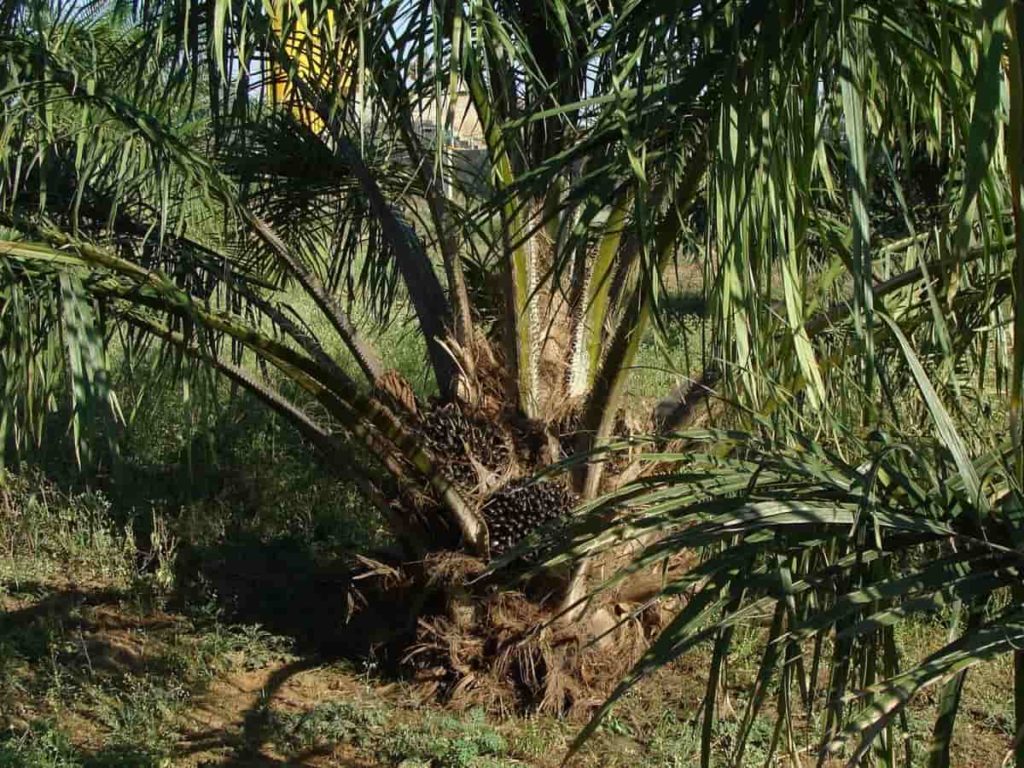
Palm Oil, used in various processed foods and industries, is used globally as a significant source of vegetable fat. Palm Oil requires uniform soil moisture and residual air so that water and nutrients can reach the root of the crop efficiently. As a perennial crop with a productive age of 40 years, accurate drip irrigation is best for maximum yields while maintaining nutrient and water use. The trees reach full maturity sooner than other irrigation techniques or rain-fed orchards by drip arranging already at the nursery stage.
Step 9: Choose the precision irrigation for oil Palm orchards
Reduce operating costs – Ensure a steady income with cost-effective automated food units that apply proper and consistent nutrients while minimizing labor and other costs.
Get more productivity, better quality, and uniformity – Innovative and user-friendly monitoring, control, and farm management solutions improve resource utilization, save water and nutrients, and increase productivity.
Meet the global demand – Maximize growth and water productivity: Drip irrigation to get better yields faster when the crop is in bloom or during pollination and fruit growth.
Apply the exact formula of the soluble nutrients directly to the plants within your irrigation system to increase the availability of phosphates, potassium, and micronutrients essential for plant growth.
Step 10: Certification schemes for more Oil Palm production
Certification schemes improve conditions for local communities: sustainable and certified Palm Oil production has significant benefits for smallholders. Improved growing and harvesting methods help improve yields. As the quality of Palm fruit improves, Palm Oil growers earn more.
With its excellent market potential and high profit per hectare, Palm Oil offers good earning opportunities in rural areas and smallholders. Therefore, certification schemes are essential to better and more sustainable practices in the Palm Oil sector.
Step 11: Fertilizer management for more growth
Oil Palm is a holistic diet and requires a balanced and adequate supply of macro, secondary, and micronutrients for growth and production. Therefore, it is recommended to apply fertilizer every three months. Fertilizer application during the 5th or 6th year of planting, when 20 to 25 tons of fresh fruit bunches per hectare are obtained from oil Palm, additional 20% fertilizer can be applied on the recommendation of experts.
In case you missed it: Date Palm Cultivation In Rajasthan, Planting
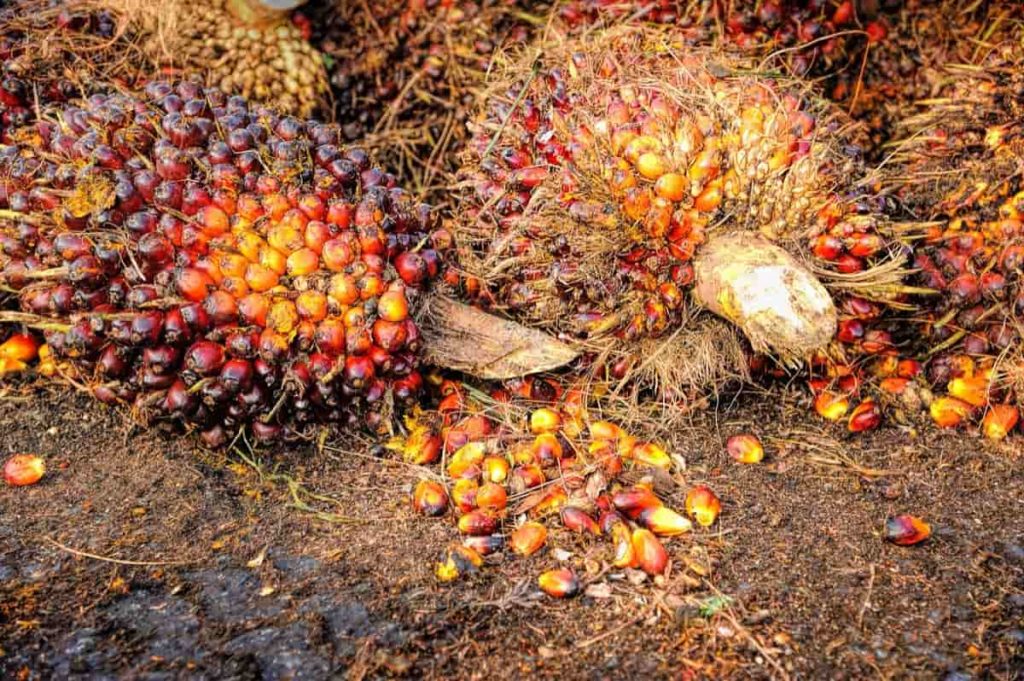
The recommended fertilizers need to be applied in 2 or 3 divided doses, once in July-August and next December-January. Newly planted plants can be fertilized after three months. The second dose of fertilizer application should be 50 to 100 kg of farmyard fertilizer and 100 kg of green manure per plant. In addition, 5 kg neem cake can also be planted per plant.
Step 12: The essential nutrients for improving yield and crop quality
- Nitrogen is vital for Palm building and maintaining FFB, and increasing oil production. However, over-supply can be detrimental as it promotes the over-growth of plants.
- Phosphorus is essential for root growth and flowering, increase in fruit size, bunch weight, and yield.
- Potassium, like nitrogen, also enhances crop growth and increases cluster size and FFB production. Large quantities of dates are used, but the supply needs to be balanced with nitrogen and other cations such as magnesium and calcium.
- Large amounts of magnesium are required for photosynthesis, growth and budding, and fruit weight. It also plays a role in improving the oil content of the bunch.
- Calcium is essential for Palm health.
- Sulfur is required for high yield with nitrogen.
- Boron is also essential for root development and fruit set.
- Zinc – especially on peat soils, helps grow new tissues.
- Copper – especially on peat soils – and manganese and iron will also help maintain growth.
Step 13: Trimming plants for more plant growth
It would help if you always cut the dried leaves of the Oil Palm. To cut the leaves without damaging the oil Palm, your tools should sharpen well. Cut the plant leaves very close to the stem so that no other plant grows on the axis of the cut leaves. Remove any ferns from the stem that may grow on the leaf axils. Also, remove male flowers.
Step 14: Pollination for good fruit set
Oil Palm is a highly cross-pollinated crop. Wind and insects help pollinate, but wind pollution is not enough. Effective pollinating worms such as Elaeidobius kamerunicus help in good pollination and fruit set. It is advisable to leave this bevel 2-1 / 2 years after planting. If the plants do not have good deep and vigorous leaves, release the weevils after three years.
Step 15: Pruning of fronds for increasing crop yield
Health and green fronds should not be cut. They should be maintained in maximum numbers. It is essential to keep an average of 36 to 42 green fronds on the Palm at any given time. Dry and diseased leaves must be cut off at the base of the stem. When pruning the leaves, they should be cut as close to the stem.
If pruning/cutting damages the base of the friend and stem, it can cause infection. Therefore, a sharp sickle or chisel should be used. The slope of the cut should be towards the ground so that rainwater gets to the ground. If the slope of the cut surface is towards the stem, water may accumulate in the crevices and cause rot. Cutting too many green fronds retards the growth of oil Palm and reduces yield.
Step 16: Harvesting tips for maximizing oil production
Oil Palm growers should be careful when harvesting ripe fruit bunches so that the oil extracted from the fruit is not affected. Timely harvesting helps maintain and maximize oil production. Proper and timely harvesting of fruit bunches is a vital operation that largely determines the quality of the oil. Yield is expressed as fresh fruit bunches (FFB) kg per hectare per year or oil per hectare per year. Bunches usually ripen within six months after anthesis.
Raw fruits are high in water and carbohydrates and low in oil. As the fruit ripens, the amount of oil in the mesocarp increases by 80 to 85%. Overripe fruits contain more free fatty acids (FFA) due to rot and thus increase acidity. Usually, ripe fruits attached to clusters contain 0.2 to 0.9% FFA, and when it comes out of the extracting plant, the FFA content is more than 3%.
Fruit ripening is the degree of separation of the fruit from the clusters and a change in the fruit’s color and texture. Fruits begin to ripen from top to bottom, nigrescens fruits turn reddish-orange and virescens (green) to reddish-brown. For equivalent bunches, ripening is faster in young Palms than in older Palms. The criteria used to determine the degree of ripening based on fruit detachment are as follows;
- Fallen fruit: 10 detached or easily removable fruits for young Palms and 5 for adult Palms,
- Number of fruits detached after cutting five or more fruits/kg bunch weight,
- Amount of detachment per group; Fruit detachment at 25% of the visible surface of the bunch.
In case you missed it: Date Palm Seed Germination, Time, Temperature (Kajura)
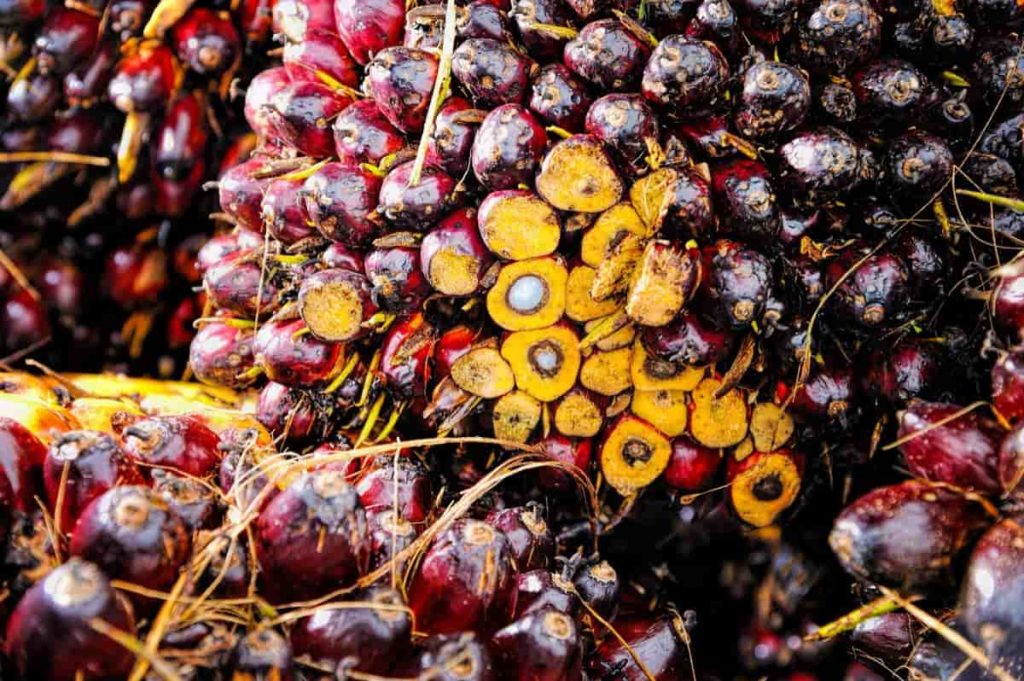
Frequently asked questions about Oil Palm cultivation (FAQ)
What is the profit of Palm Oil per acre?
The profit per acre of Palm Oil is Rs. 50,000 from 1 acre of Oil Palm plantation.
How many oily Palm trees are there in 1 acre?
There are approximately 60 to 80 Oil Palm trees per acre.
Is Palm Oil Farming Profitable?
Yes, oil Palm farming is a very lucrative business.
Why isn’t my Palm tree growing?
Palm trees have different needs in more humid or arid climates. Watering your tree frequently can slow its growth. Remember, boron can be easily washed away by soil, so more water is more likely to cause nutrient loss.
Why is Palm Oil so profitable?
Oilseed Palm trees are easy to grow with low investment.
- Economical Aquaculture: A Guide to Low-Budget Fish Farming
- 15 Common Planting Errors That Can Doom Your Fruit Trees
- How to Make Houseplants Bushy: Effective Tips and Ideas
- Innovative Strategies for Boosting Coconut Pollination and Yield
- Pollination Strategies for Maximum Pumpkin Yield
- The Complete Guide to Chicken Fattening: Strategies for Maximum Growth
- Natural Solutions for Tulip Problems: 100% Effective Remedies for Leaf and Bulb-Related Issues
- Revolutionizing Citrus Preservation: Towards a Healthier, Greener Future
- Natural Solutions for Peony Leaf and Flower Problems: 100% Effective Remedies
- Maximizing Profits with Avocado Contract Farming in India: A Comprehensive Guide
- Natural Solutions for Hydrangea Problems: 100% Effective Remedies for Leaf and Flowers
- The Ultimate Guide to Choosing the Perfect Foliage Friend: Bringing Life Indoors
- From Sunlight to Sustainability: 15 Ways to Use Solar Technology in Agriculture
- The Ultimate Guide to Dong Tao Chicken: Exploring from History to Raising
- The Eco-Friendly Makeover: How to Convert Your Unused Swimming Pool into a Fish Pond
- Mastering the Art of Delaware Chicken Farming: Essentials for Healthy Backyard Flocks
- 20 Best Homemade Fertilizers for Money Plant: DIY Recipes and Application Methods
- How to Craft a Comprehensive Free-Range Chicken Farming Business Plan
- Brighten Your Flock: Raising Easter Egger Chickens for Beauty and Bounty
- How to Optimize Your Poultry Egg Farm Business Plan with These Strategies
- Subsidy for Spirulina Cultivation: How Indian Government Schemes Encouraging Spirulina Farmers
- Ultimate Guide to Raising Dominique Chickens: Breeding, Feeding, Egg-Production, and Care
- Mastering the Art of Raising Jersey Giant Chickens: Care, Feeding, and More
- Ultimate Guide to Raising Legbar Chickens: Breeding, Farming Practices, Diet, Egg-Production
- How to Raise Welsummer Chickens: A Comprehensive Guide for Beginners
- How to Protect Indoor Plants in Winter: A Comprehensive Guide
- Ultimate Guide to Grow Bag Gardening: Tips, Tricks, and Planting Ideas for Urban Gardeners
- Guide to Lotus Cultivation: How to Propagate, Plant, Grow, Care, Cost, and Profit
- Agriculture Drone Subsidy Scheme: Government Kisan Subsidy, License, and How to Apply Online
- Ultimate Guide to Raising Araucana Chickens: Breed Profile, Farming Economics, Diet, and Care
- Bringing Hydroponics to Classroom: Importance, Benefits of Learning for School Students
- Ultimate Guide to Raising Polish Chickens: Breed Profile, Farming Economics, Diet, and Care
- Ultimate Guide to Raising Australorp Chickens: Profile, Farming Economics, Egg Production, Diet, and Care
- Silkie Chicken Farming: Raising Practices, Varieties, Egg Production, Diet, and Care
- Sussex Chicken Farming: Raising Practices, Varieties, Egg Production, Diet and Care
- Homemade Feed Formulations for Livestock: Discover Cost-effective Starter to Finisher Feed Recipes